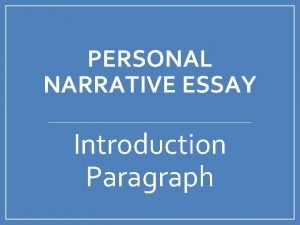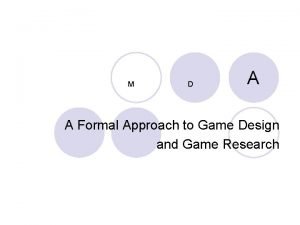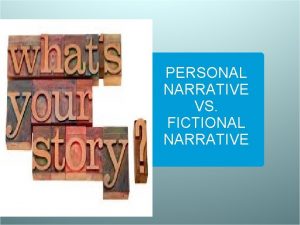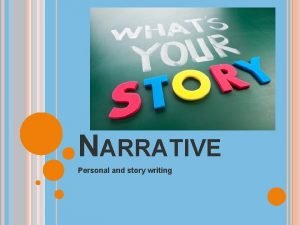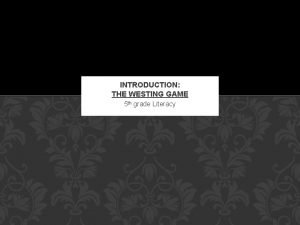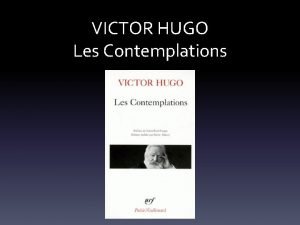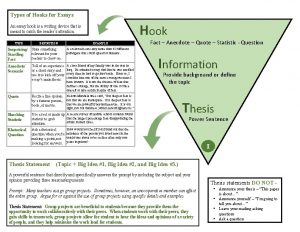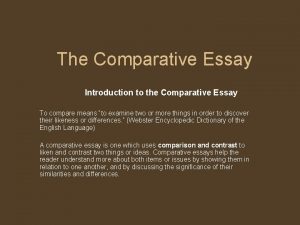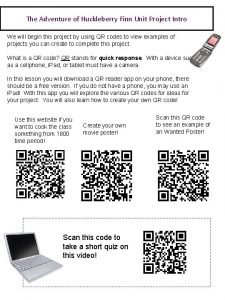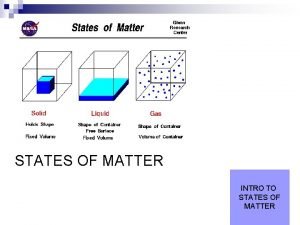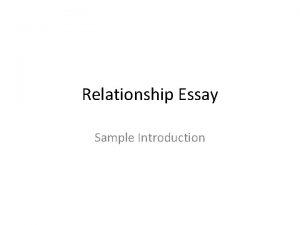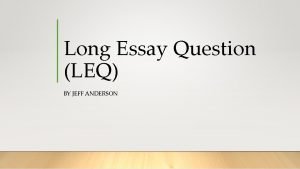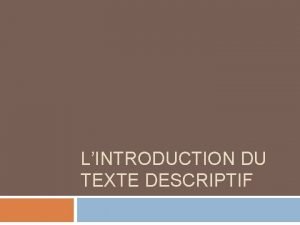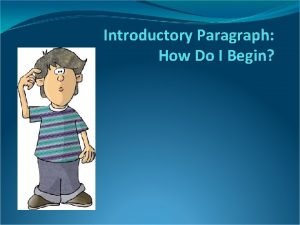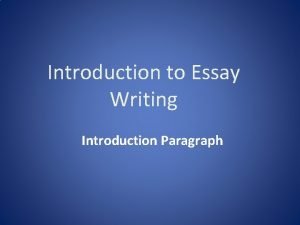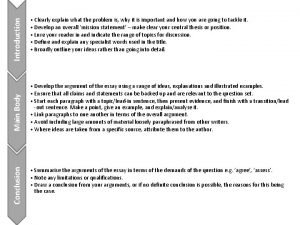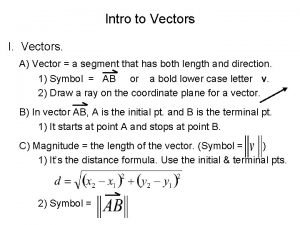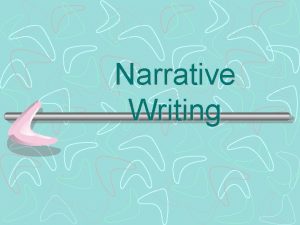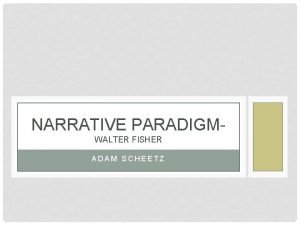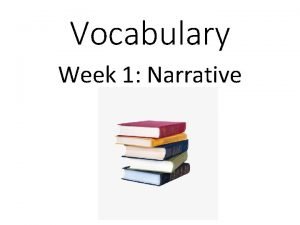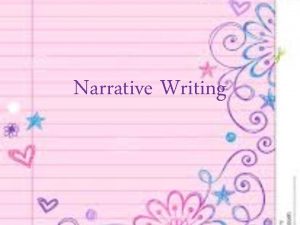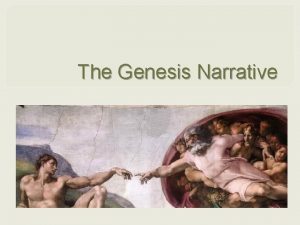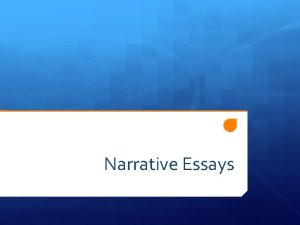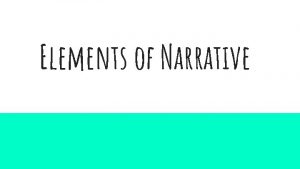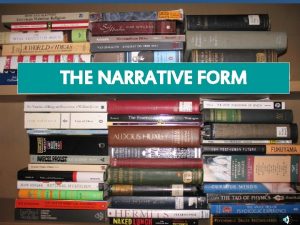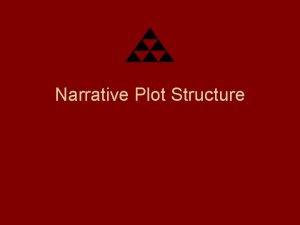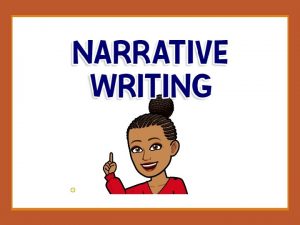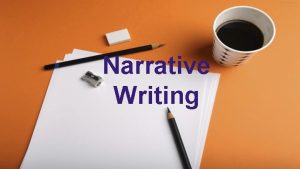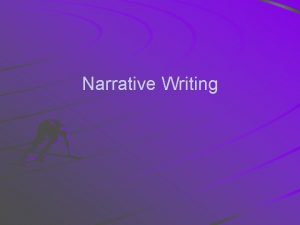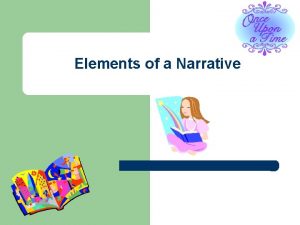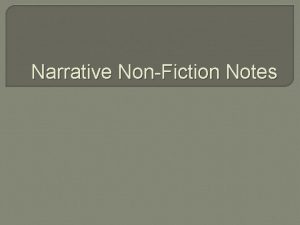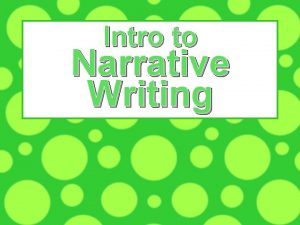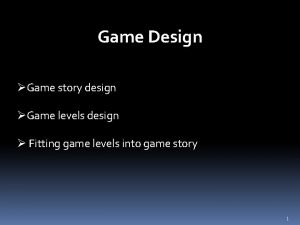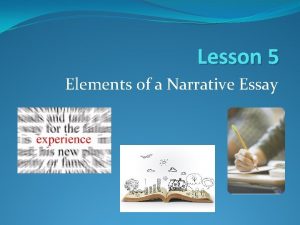Game Design LESSON 5 Narrative Game Design Intro
















![HOW TO GET STARTED: Little Red [2] Consider interesting choice-spaces in story-rich (conflict-rich) versions HOW TO GET STARTED: Little Red [2] Consider interesting choice-spaces in story-rich (conflict-rich) versions](https://slidetodoc.com/presentation_image_h2/93eb028eb36673f4c4854f044bdf1f31/image-17.jpg)























- Slides: 40

Game Design LESSON #5: Narrative Game Design Intro to Unity 2 D and Branching Narrative games

TODAY: 1. Design Method #6: Narrative Game Systems Parser vs Choice Temporal vs Spatial 2. Introduction to Unity for Narrative games 3. Introduction to 2 D Unity Games

GAME NARRATIVE PART 1 A Welcome to your Midterm Project! • 3 weeks to design and develop a Visual Novel game! • All base code provided. • You supply the story, the art, the choices, and any use of stats to track player progress. • You implement in Unity with teacher aid, following the tutorial! See examples from past semester on the course site!

GAME NARRATIVE PART 1: What do Game Writers do?

What do Game Writers do? Game Writers wear many hats. Learn more by watching the interviews and talks on the course site! PLOT: • Game Design: if the game is primarily or heavily about the journey of the player character, rather than simply a sequence of challenges, then this overall story should be created by a writer. • Descriptions of places. Backstory, flavor. Can include biographies of people, histories, etc. LANGUAGE: • Branching Narrative with NPCs: Opportunities to deal with events, crisis, or good old fashioned information gathering. • Event-driven character language (like kill-lines in a fighting game) INSPIRATION: • Environmental design as world-building, often initially designed by writers • Non-verbal character cues and events, etc. : Let’s try it a bit ourselves: Game Writing Prompt #1

How is a game narrative different than other forms of narrative? What do they have in common?

How is a game narrative different than other forms of narrative? What do they have in common? Game Narrative Uniquely Requires: • Choice-rich story design, where conflicts are resolved (or escalated, or avoided) by player action • Player-focused scenarios and language: typically openly defined Character and Desire for the player to fill in But it can be similar to traditional, linear narrative in having: • 3 -Act structure (which does not need to be followed: we can do the simpler character enters a place wanting something, finds it, either gets it or not) • Short Form Narratives: Starting from active situations the player finds themselves, the narrative already well begun and underway, not “beginnings. ”

How is a Game Narrative different? Text Adventures: • Types: multiple-choice (choice-script) vs exploration (parser) • Images, sounds, or no multimedia • Created as long or short form, low barrier to entry, used for personal or revolutionary stories. • Recommendation: Avoid easy death: we do not need to write constant “lady or the tiger” scenarios—they do not need to be just binary experiences. We can track bravery and creativity and other elements in player choices, and create experiences that respond to those choices. • Before we code, generate ideas on notecards! • We should also play some games: like a Choice game (Choice of the Dragon) or a Parser game (Lost Pig)

Is every choice a good choice? 1. Build your story on Meaningful Choice: Player choice must not be just cosmetic: it should determine the course of their game experience. While it is true game narratives tend to branch and then taper to common gate experiences in order to manage development resources and maintain some continuity in experience, players need to feel that their choices are what defines their opportunities and determines their outcomes. CHOICES TO PROGRESS STAKES: Establish stakes early and Make each choice meaningful to define character or progress stakes. CHOICES TO CHANGE STATES: Consider player states in “Sandbox” open world games: players can do just about anything, but their actions cause certain stats to be adjusted, changing how groups of NPCs react to them and offer (or deny) opportunities. CHOICES TO SURVIVE: Classic Choose-Your-Own-Adventure game books had failure-rich environments, where most paths ended in player death and an early end to the story. The challenge was to find the longest path to read the most and end more happily (again, you are encouraged to strive for more than life/death stakes).

Is every choice a good choice? 2. Strive For Weird: Consider weird characters whose strangeness can inform player choices and abilities. Consider weird situations that can presents regular human concerns and conflicts in extra high contrast by separating them from ordinary life, thus offering a distilled, deeper understanding. This is the common power of Science Fiction and Fantasy: to create a metaphor for human experience. 3. Character is revealed through society: While inward-focused stories about solitude and survival can work, most players are interested in connecting with others, and character is revealed in choices made out in the world. Consider the player choices and emotional experiences defined by the companions in Ico, Portal, Dad of War, and the Walking Dead.

Game Narrative: Scope NOTES ON STRUCTURE/SCOPE: Game Narrative is typically planned out and represented as a tree of choices, or a web of spaces to explore • TREE format: To limit overall branching for reasonable scope, and to allow for the narrative to follow a more traditional story structure, most text adventures have “pinch points, ” where the narrative choices cut down to the same event. If this is done twice, we can get a rough 3 -act structure. • WEB format: Alternatively, consider a physical space with multiple rooms, like a mansion. Each room represents a choice: where will the player go next? What will they find in each? To make the rooms remember our presence, track our interactions in each. Story events can then occur when certain elements are found and put together, or after a certain number of rooms have been entered. SCOPE: To create a limited-choice game, only 2/3 of passages offer choices, and all of which return to 2 -4 branches. Project Length guidelines: A single read would be about 1 page/minute, or 5 “passages” (screens)/minute. We will do a short 5 -minute story; with branching narrative kept limited, assume 10 pages (50 passages) for the full story.

Game Narrative: Pinch Points By bringing the narrative back to these bottlenecks/ pinch-points, we not only save on project scope; we can create emotional beats that every player gets to experience. The experience of these pinch points does not need to be completely identical; as one big event happens that everyone experiences, different paths can lead to different perspectives on that event (so the lines would meet at 2 or three nodes, rather than one). EXAMPLE 1: A storm hits the ship at the pinch point: did the player’s choices lead them to be on deck when that happens, struggling with sails, or below decks, dealing with the water that is entering the hold? EXAMPLE 2: An earthquake hits the city at the pinch point: did the player’s choices lead them to be above ground, helping the rescue efforts, or in a building that collapsed, and they are struggling to survive long enough to be rescued?

Game Narrative: Flowcharts “Branches and Bottlenecks” Flow outwards and inwards (pinch points) through a timebased narrative vs “Location Web” (Narrative unfolds as player moves between regions. Time is entirely playerdriven)

Game Narrative: Mechanics vs Narrative A key concept of IF design: Define everything (language, setting, NPCs, options) around the player, but let the player define their SELF through their choices. Mechanics consequences VS Narrative consequences. • Mechanic changes: what player can do (special pick ups, etc) • Narrative changes: experiences players acquire that build a narrative in their head, and (ideally) how the player is treated by the game (characters, status, available social options) as a result of their choices Of course, these things go hand-in-hand: the player gaining weapons (with advantages in battle) by massacring a goblin encampment can also be scorned as a killer by the local village, and thus unable to get information from them that other players might access.

HOW TO GET STARTED: Little Red When starting a game story, it is helpful to create an overall structure. [1] Start by identifying big Locations and Pinch points: 1, 2, 3, etc. Fairy tale example exercise: Little Red Riding Hood. What are the settings?

HOW TO GET STARTED: Little Red When starting a game story, it is helpful to create an overall structure. [1] Start by identifying big Locations and Pinch points: 1, 2, 3, etc. Fairy tale example exercise: Little Red Riding Hood. L 1: Start in the family house P 1: Leave house with basket of stuff. L 2: Travel in the woods. P 1: Exit woods, Arrive at Grandma's. L 3: Experiences with Wolf at Grandma’s Endings: Alternative endings, depending on version. All version of Little Red need to exit the house and enter the woods, and exit the woods to enter Grandma’s house. These are “pinch points” in a temporal narrative, to help maintain a story structure and manage scope. BUT In between these, there are wide possibility spaces for stories and choices!
![HOW TO GET STARTED Little Red 2 Consider interesting choicespaces in storyrich conflictrich versions HOW TO GET STARTED: Little Red [2] Consider interesting choice-spaces in story-rich (conflict-rich) versions](https://slidetodoc.com/presentation_image_h2/93eb028eb36673f4c4854f044bdf1f31/image-17.jpg)
HOW TO GET STARTED: Little Red [2] Consider interesting choice-spaces in story-rich (conflict-rich) versions of these Locations. For Example: What is happening in the house BEFORE Red leaves? Why does she want to leave, what does she decide to bring with her? Is she packing for a casual trip to grandma, or is she running away from home? In the woods, multiple scenarios could play out, depending on theme. If this is the traditional, sexist morality play, then the scenarios could have to do with temptation. A way to flip the traditional narrative could be about liberating woodland creatures from emotional and physical traps. [3] Then, consider player stats and states to track: For Example: Red's generous vs selfish choices, subtracted for a "goodness vs wolfishness" social state. This social state score could effect how the many forest animals and woodcutters treat her.

QUESTION: What makes for a compelling Theme?

QUESTION: What makes for a compelling Theme? • Wish Fulfillment • Universal or Personal Truths

GETTING STARTED: STORY IDEA GENERATOR 9000 Feeling stuck? Choose from each column (or roll a d 20) to create strange story seeds! Note that any of these can be meaningfully anthropomorphized, made scifi or fantasy, or just a little weird. CHARACTER SETTING DESIRE THEME 1. 2. 3. 4. 5. 6. 7. 8. 9. 10. 11. 12. 13. 14. 15. 16. 17. 18. 19. 20. Housewife Jogger Chef Alien in Disguise Janitor Florist Traffic Cop Kite Flyer Bounty Hunter Salesperson Child Mechanic Musician Assembly Line Worker Surgeon Inventor Painter Clown Thief Street Cleaner 1. 2. 3. 4. 5. 6. 7. 8. 9. 10. 11. 12. 13. 14. 15. 16. 17. 18. 19. 20. City Street Farm Flower Shop Treehouse Kitchen Dungeon Space Station Boiler Room Jungle A Bar Water Fountain Truck Rally Restaurant Alien Planet Castle Battlement Air Ducts Super Science lab A Cliff or Building Ledge Elevator Park Bench 1. 2. 3. 4. 5. 6. 7. 8. 9. 10. 11. 12. 13. 14. 15. 16. 17. 18. 19. 20. Sandwich Treasure Chest Flower/s A Date A Job Missing Shoe Drink Doll To Get In To Get Out To Not Fall / Die To Cross a Space To Reach Something High To Reach Something Low Money (coin or bill) Coffee Baby in a Carriage Umbrella Eyeglasses Cake 1. 2. 3. 4. 5. 6. 7. 8. 9. 10. 11. 12. 13. 14. 15. 16. 17. 18. Loneliness Life Finds a Way Compassion Death is a Part of Life Greed Destroys Gratitude Uplifts Friendship Takes Sacrifice Power Corrupts Person vs Nature Perseverance Racism Blinds Kindness Loss is Not the End Sacrifice Brings Reward Good Triumphs Over Evil Revenge is Poison We Are In Our Own Way Kids Need to Learn on Their Own 19. Technology Dehumanizes 20. Everyone has Value

NARRATIVE GAME PITCHES Consider combos of character, setting, desire, and theme Pitch ideas to your team. As a team choose one to pursue. Decide the overall structure: External and internal stakes, major events and locations. Consider three act structure and possible pinch-points. Create a compelling Starting Scenario: Get us into the action, give us immediately meaningful choices: What are the stakes, and how does your choice progress the player towards the resolution of those stakes? • Are you starting dangling over a cliff? • Racing down the street after someone? • In the midst of a diner break-up? • At the bottom of a well?

GAME NARRATIVE PART 3: How can Multimedia enhance IF? How can the experience of an Interactive Fiction game be improved through visuals and sounds?

GAME NARRATIVE PART 3: How can Multimedia enhance IF? How can the experience of an Interactive Fiction game be improved through visuals and sounds? REMEMBER: art and audio do not make games more fun, but they can enhance engagement and clarity.

GAME NARRATIVE PART 3: How can Multimedia enhance IF? Since the start of Text Adventures (as books), writers have worked with artists to give a boost to the reader’s imagination. “Choose Your Own Adventure” books (originally 1977 -1985) typically focused illustrations on objects important to the moment of the story (a cave entrance, a sword), but sometimes showed key moments of character action, especially at end points, where the image lingered I the mind of the player, solidifying the experience of the ending. https: //bit. ly/2 Uy. PPqi

GAME NARRATIVE PART 3: How can Multimedia enhance IF? From “The Modern World of Interactive Fiction” by Ben Latimore https: //bit. ly/383 n 74 I At the start of personal computers, “the written word was often the only way to get indepth puzzles, characters, and stories in your game. “As computers became more capable, the text adventure fell out of favor, replaced by more graphically impressive titles. But after several decades in varying states of activity, Interactive Fiction has returned to the scene with some of the biggest—most impressive—and creative titles since the early 80 s. ”

GAME NARRATIVE PART 3: How can Multimedia enhance IF? Lucas. Arts created the SCUMM engine in the 1990 s, and created a series of “point and click adventures”: IF stories where “turning the page” was accomplished through a visual and click-able exploration of the space. Maniac Mansion, Sam and Keith, and Monkey Island were among the early hits of this genre, with increasingly elaborate art. The Broken Age is a more recent creation by former Lucas. Arts developers at Double Fine Studios.

GAME NARRATIVE PART 3: How can Multimedia enhance IF? Lucas. Arts even developed a 3 D game version of this genre with Grim Fandango. (1998). The animation provides players with an exciting visual entry, and develops characters thru performance, but at its heart, it is still a text adventure with storydriven choices.

GAME NARRATIVE PART 3: How can Multimedia enhance IF? Cypher (2012): Neon signs in a rainy city” A Cyberpunk text adventure rich in visuals, made by two people who loved text adventures but felt their audience was limited in this world of saturated visuals. https: //bit. ly/38506 yl Verge article: The actual text takes up a large portion of the game screen, while the right hand side is augmented with the visual enhancements — ranging from items in your inventory to the various locations you'll explore around the city. And in a nod to classic text adventures, the game even includes a logo on screen at all times, just in case you need a reminder of what you're playing. "Who puts the game title on screen nowadays? " asks [creator] Carlos. "Back in the days this was a common feature that the developers began to replace with mini maps, or big score letters. "

GAME NARRATIVE PART 3: How can Multimedia enhance IF? Coffee Talk (2020) https: //bit. ly/2 S 3 YXBg The game features: • Tales of people in alternative Seattle, where elves, orcs, and mermaids live with humans in a modern, familiar world • Branching story lines where the decisions do not come from the dialogue options you choose, but through how you treat and serve the customers of your café. • 90 s anime inspired pixel art visuals, gently looping animations and chill-vibes-inducing color palette to help you immerse yourself in the game's world. • Selection of jazzy and lo-fi music to accompany late night warm drinks and talks. • An experience to make you think, feels, and help rest your body and soul. More pixel art text games: https: //itch. io/games/tag-interactive-fiction/tag-pixel-art

GAME NARRATIVE PART 3: How can Multimedia enhance IF? AUDIO: Set a mood with music, experience a sense of place with ambient sounds, enhance a jump-scare visual While not a game, consider the horror comic Bongcheon Dong Ghost by Horang: https: //bit. ly/39 ex. B 15

GAME NARRATIVE PART 3: How can Multimedia enhance IF? NEW MEDIA: Story in VR: Sequenced (2015) A Choose Your Own Adventure in VR: https: //uploadvr. com/apelab-to-show-first-ever-choose-yourown-adventure-series-for-vr-at-gdc/ 360º narrative, with interactivity through use of gazebased interactions. Choose Your Own Adventure as Guidebook: Jerusalem City Stories (2018) Times. Of. Israel. com/innovative-interactive-guidebook-lets -you-choose-your-own-jerusalem-adventure/

SO, HOW DO WE DO THIS IN UNITY? Your first Unity game will require no original scripting: following the plan and cop the scripts from the class Branching Narrative tutorial, where all elements act like switches: turn an element on if you want to see it and off if you don’t! This first game is a chance to practice important game development pipeline systems like using a Git. Hub repository, Zero Drafting art assets, and the basic structure of C# scripts (and ways to both mess them up and fix them). And you get to write and illustrate a simple interactive story! All notes are here: madwomb. com/tutorials/Game. Design_Unity. Visual. Novel. html

INTRO TO 2 D GAMES IN UNITY You are welcome to choose 2 D or 3 D games for your final team projects. If you choose to create a 2 D game, the course website has modules for Top-down (exploration, fighting, arena battle) or Side-scrolling (platformers, etc) formats, enemies, etc (much of which can be adapted for 3 D games). 2 D Games in Unity use an Orthographic Camera, Sprites, and Physics 2 D components. We will assemble a basic platform jumping game to get started.

INTRODUCTION TO UNITY for 2 D 1. Unity for 2 D: 2. Textures as Sprites 3. Building the Platformer Scene 4. Character Animation 5. Character Set up & State Machine (See course website Unity 2 D Tutorial)


Unity: Intro to 2 D Game Dev Basics of 2 D: • Hit 2 D button above Scene for flat view. • Set PNG art to “Sprites” and set “Order in Layer. ” Higher numbers = closer to camera. • Use only 2 D Physics (Rigidbody 2 D, Box Collider 2 D) Painting Backgrounds: PNGs, quality 24, power-of-2 • Standard Display: 1280 x 720, 72 ppi. Paint 2 x for HD/retina. • Set PNG art to “Sprites” and set “Order in Layer. ” Higher numbers = closer to camera. • Export layers: FG, MG, BG, with empty areas. • Scrolling: at least 3 original screens, tiling ends. • 2 D Platformer: include obvious “platforms. ”

Unity: Intro to 2 D Game Dev

Unity: Intro to 2 D Game Dev

Due Next Week: HOMEWORK #5: With your new team, meet out of class to discuss the Short Narrative Game you want to create. Diagram the story structure with main choice lines and pinch points. Type a list of needed Art Assets (backgrounds and NPCs/Objects). Zero Draft all dialogue and all art. As a team, submit to Piazza hw 5: • Narrative Game Story Pitch: 2 -3 sentences explaining context, player, primary STAKES (what the character has to lose and must overcome). • Flow Diagram showing overall structure (at least 10 Scenes + win and lose, each describing main choices): • Full Zero-Draft Script/dialogue and all Zero Draft Art Assets (NOTE: Zero-Draft = crappy. Embrace the quick and crappy! This is practice making placeholders) • First 3 Scenes drafted in Unity. ALSO individually submit your first PPR and read Mc. Gonigal's "Reality is Broken" Part 2 b: Reinventing Reality (pp 119 -215)

Have an Excellent Week! And don’t forget to email with questions: Instructor: JASON WISER Jason. Wiser. Art@gmail. com Available daily.
 Narrative essay intro paragraph
Narrative essay intro paragraph Intro paragraph for personal narrative
Intro paragraph for personal narrative Pengantar teori permainan
Pengantar teori permainan Size in floral design
Size in floral design A formal approach to game design and game research
A formal approach to game design and game research Personal narrative vs fictional narrative
Personal narrative vs fictional narrative Difference between narrative and story
Difference between narrative and story The westing game anticipation guide
The westing game anticipation guide What is a thematic paragraph
What is a thematic paragraph Victor hugo léopoldine poème
Victor hugo léopoldine poème Different types of essay hooks
Different types of essay hooks Hook for introduction
Hook for introduction How to start a comparison essay
How to start a comparison essay Body paragraph format
Body paragraph format Huckleberry finn intro
Huckleberry finn intro States of matter
States of matter Find similar images
Find similar images Venus omkrets
Venus omkrets Intro body conclusion example
Intro body conclusion example Intro to reverse engineering
Intro to reverse engineering Intro essay examples
Intro essay examples Part of research paper
Part of research paper Introduction to organic chemistry
Introduction to organic chemistry Intro to offensive security
Intro to offensive security Utvecklingssamtal engelska
Utvecklingssamtal engelska Materialgruppenmanagement
Materialgruppenmanagement Lord of the flies thesis
Lord of the flies thesis Leq format
Leq format Introduction texte descriptif exemple
Introduction texte descriptif exemple Introduction paragraph examples
Introduction paragraph examples Andrew ng introduction to machine learning
Andrew ng introduction to machine learning Intro to verilog
Intro to verilog Severance intro
Severance intro Ifs managers examples
Ifs managers examples Intro to hadoop
Intro to hadoop Intro paragraph essay example
Intro paragraph essay example Introduction
Introduction Kfc company details
Kfc company details Intro main body conclusion
Intro main body conclusion Intro to vlsi
Intro to vlsi Intro to vectors
Intro to vectors
